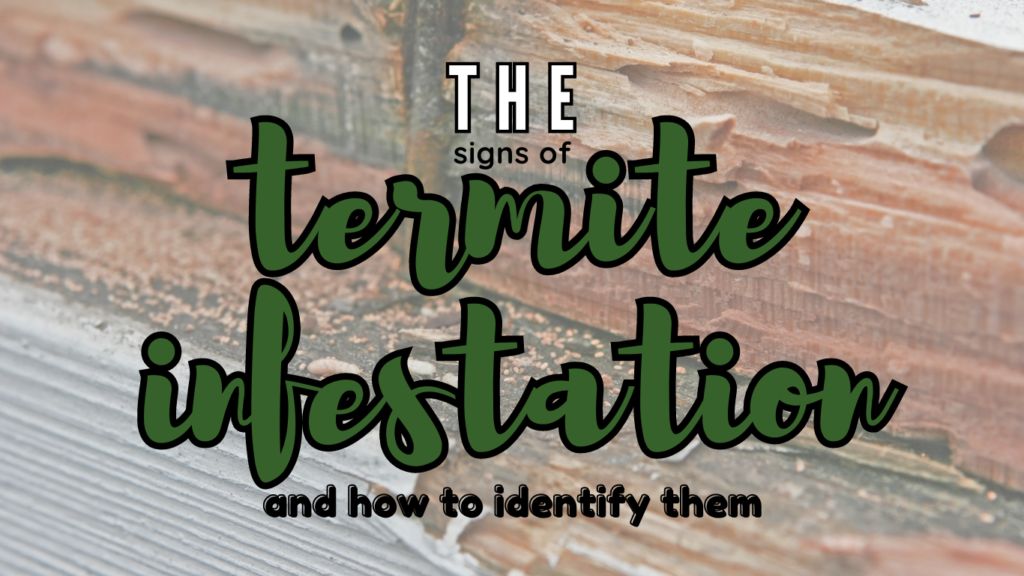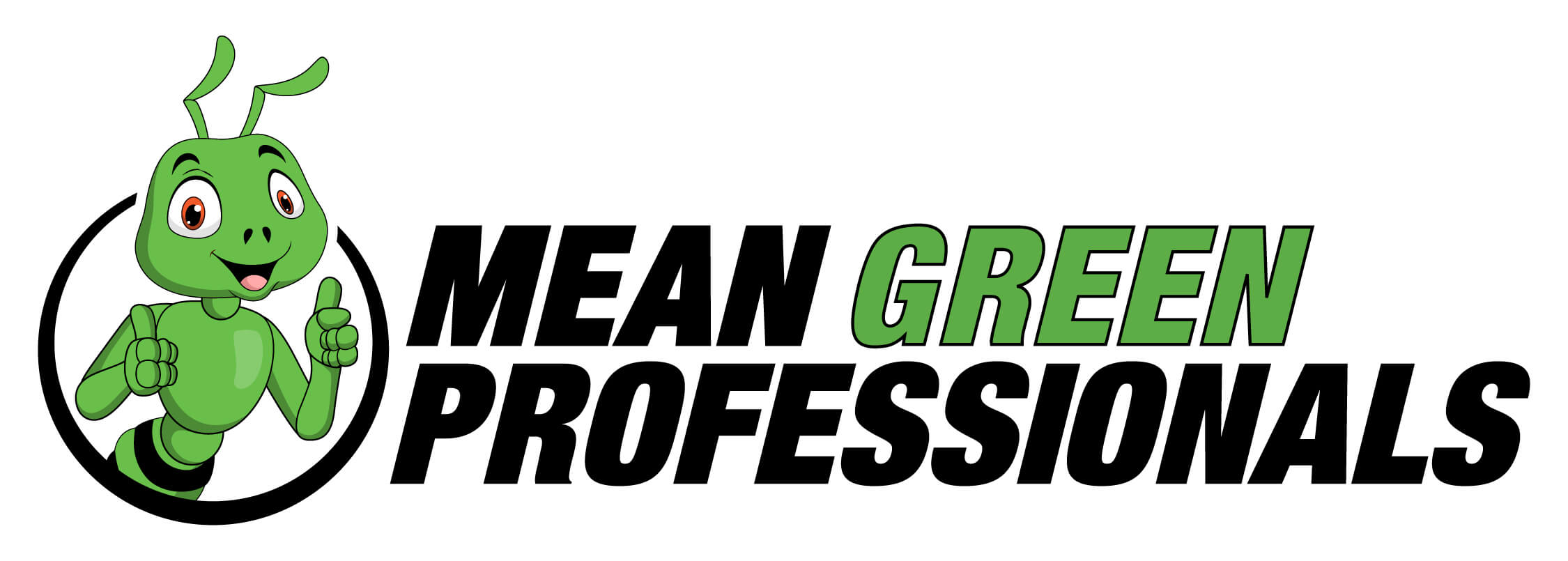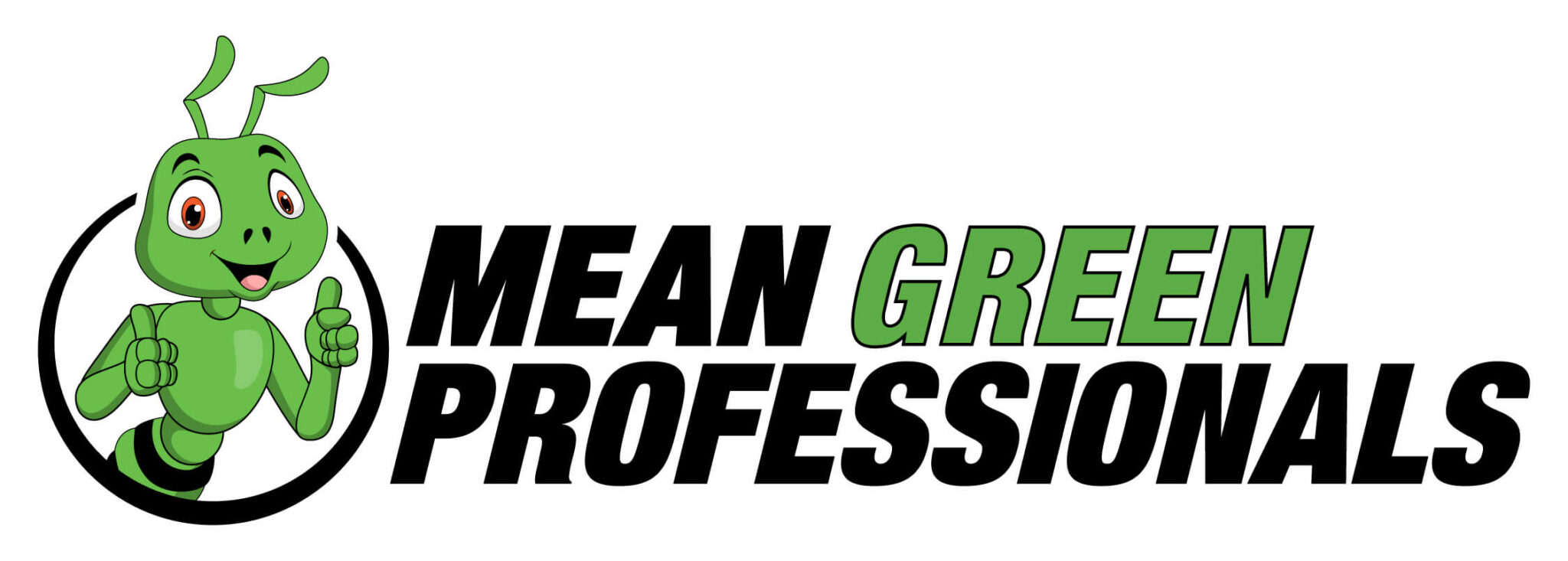
The signs of termite infestation and how to identify them have always been a mystery to homeowners and business owners alike in Smyrna, Tennessee, but detecting them early can save you from extensive damage and costly repairs.
Detecting the indications of termite infestation early can be difficult, but there are certain indicators that could point to their presence in your home or property.
In this blog post, we will discuss the signs of termite infestation and how to identify them by delving into the world of these wood-eating insects and going over various species, such as subterranean termites and dry wood termites.
We’ll provide detailed information on swarmers or winged termites, including their characteristics and why they might appear inside houses.
We’ll also guide you through identifying mud tubes – another clear sign of termite activity – explaining what they look like and where they’re commonly found.
The presence of a gritty gray-brown film on damaged material is another indicator that we will explore further.
Furthermore, we’ll help you understand how to recognize hollow-sounding wood and visible holes in woodwork due to termite damage.
Finally, yet importantly, selecting professional pest control services for an annual termite inspection is crucial when suspecting any form of termite invasion.
Beyond identification, prevention is key to a potential termite problem.
Therefore, we will discuss effective building procedures to deter termites along with regular home maintenance checks for possible termite activity.
Stay tuned for these valuable insights about recognizing the early warning signs of a termite infestation!
Table Of Contents:
- Identifying Swarmers or Winged Termites
- Discovering Mud Tubes on Your Property
- Observing Gritty Gray-Brown Film on Damaged Material
- Recognizing Hollow Sounding Wood and Visible Holes in Woodwork
- Choosing Professional Pest Control Services
- Preventing Termite Infestation: Tips and Tricks
- FAQs in Relation to Signs of Termite Infestation and How to Identify Them
- Being aware of the signs of termite infestation and knowing how to identify them can help you take prompt action, protect your property from extensive damage, and preserve its structural integrity for years to come.
Identifying Swarmers or Winged Termites
Uh-oh, spotted a swarm of winged insects inside your house?
Be vigilant, as this could be a sign of termite infestation.
These creatures are usually termite swarmers or winged termites from mature colonies seeking to establish new nests.
Early detection could save you from hefty repair costs associated with termite damage.
The Characteristics of Swarmers
Termite swarms typically measure 1/4 inch and boast two sets of wings that are roughly the same size.
They’re often mistaken for flying ants but can be distinguished by their straight antennae, uniform waist, and the presence of wings that remain after swarming.
Why They Appear Inside Houses
Swarmer termites emerge when the colony has reached a certain size or age – this is usually an indication that there’s an active termite infestation nearby.
The appearance of these winged termites indoors often means there’s an infestation within the structure itself, as they don’t tend to travel far from their original colony.
If left unchecked, these tiny invaders can cause significant structural damage over time, which may result in costly repairs.
Therefore, if you spot any signs suggestive of termite activity, such as discarded wings around your home’s interior – especially near window sills or door frames – it would be wise to contact professional pest control services like Mean Green Pest Pros immediately.
They use eco-friendly methods instead of harmful chemical insecticides for effective elimination while ensuring safety for inhabitants and the environment alike.
Remember: early detection is key.
By recognizing signs such as swarmers’ presence at an early stage, homeowners stand a better chance at mitigating potential damages caused by these destructive pests before they become too extensive.
The article discusses how to identify swarmers or winged termites, which are an indication of an active termite infestation nearby. Early detection is crucial in preventing significant structural damage caused by these pests, and homeowners should contact professional pest control services that use eco-friendly methods for effective elimination while ensuring safety for inhabitants and the environment alike.
Discovering Mud Tubes on Your Property
Are you seeing strange, pencil-thin lines of dirt on your property’s exterior walls or wooden beams?
Don’t ignore them.
These mud tubes could be a sign of a termite infestation.
Subterranean termites use these tubes as protective tunnels to move around undetected.
What do mud tubes look like?
Mud tubes are usually the same color as the surrounding soil and can range from a few inches to several feet long.
They’re a common early warning sign of termite activity and should be taken seriously.
Termites can cause significant damage over time as they eat wood from dead trees at structural elements within your home.
Where are they commonly found?
You’ll most likely find mud tubes along foundation walls, support piers, sill plates, and floor joists.
Termites prefer dark and moist environments, so check any areas where wood comes into contact with soil or where there may be moisture problems, such as leaky pipes or poor drainage around foundations.
Annual termite inspections conducted by professional pest control services can help identify potential issues before they become major problems.
Regular inspections can save homeowners thousands in repair costs down the line.
Drywood vs Subterranean Termite Infestations
- Drywood Termites: Drywood termite droppings live inside dry wood structures, making them harder to detect than their subterranean counterparts. Look out for small piles resembling sawdust – this could actually be dry wood termite droppings.
- Subterranean Termites: Eastern subterranean termite species leave more obvious signs behind, like those pesky mud tubes. Look out for muddy tunnel networks running across surfaces adjacent to ground-level areas susceptible to dampness caused by leaks.
If you suspect termite activity, don’t panic.
There are effective solutions available, including eco-friendly treatments offered by Mean Green Pest Pros that utilize all organic ingredients instead of harmful chemical insecticides like pyrethrum.
The article discusses signs of termite infestation and how to identify them. Mud tubes are a common early warning sign of termite activity, which can cause significant wood damage over time by eating away at structural elements within your home. Regular inspections conducted by professional pest control services can help identify potential issues before they become major problems and save homeowners thousands in repair costs down the line.
Observing Gritty Gray-Brown Film on Damaged Material
Have you noticed a thin, gritty gray-brown film on your woodwork or other materials in your home?
It could be an indication of termite activity.
This substance is actually the result of termites using their saliva to glue together their tunnels for travel purposes.
It’s one of the less obvious signs but equally important to recognize.
How does this film form?
The process begins when worker termites eat, chew, and digest cellulose from wood or other plant material.
They then excrete it as fecal pellets, which are used to build protective tubes and nests within infested structures.
These fecal pellets mix with soil particles and termite saliva, creating a distinctive gritty gray-brown film.
If you spot this kind of material in or around your property, it’s time to act.
Importance of recognizing this sign
This subtle sign often goes unnoticed until significant damage has been done because it blends well with the natural coloration of most woods and can easily be mistaken for dust or dirt accumulation.
However, its identification is crucial in early detection before extensive structural damage occurs.
Apart from visual inspection, another way homeowners can identify termite presence through this method is by using gloves to feel surfaces for grittiness – if present, there’s likely an active colony nearby that needs addressing immediately by professionals like Mean Green Pest Pros who specialize in eco-friendly pest control solutions without resorting to dangerous chemical insecticides like pyrethrum; instead, they use all organic ingredients with natural insect-repelling properties.
Besides checking wooden furniture pieces such as tables and chairs where these pests commonly reside, don’t forget about door frames, window sills, and baseboards, among other potential hiding spots.
Remember – being thorough during inspections increases chances significantly of preventing severe future damages caused by unchecked infestations.
Tips For Identifying Termite Fecal Pellets
- Fecal pellets are typically found near entry points into homes, such as windowsills or doorframes where termites swarm have gained access inside premises.
- Pellets usually measure approximately 1mm long, making them quite small hence requiring careful observation skills to detect accurately; they’re also hexagonal in shape due to unique construction methods employed by termite building processes giving off a slightly shiny appearance under light reflection conditions.
Remember: Early detection plays a key role in managing effectively any existing colonies while minimizing potential risks associated with large-scale invasions down the line – always stay vigilant and ensure regular check-ups are performed to maintain a safe living environment free of destructive invaders.
The article discusses signs of termite infestation and how to identify them, including observing a gritty gray-brown film on damaged material which is actually the result of flying termites using their saliva to glue together their tunnels for travel purposes. Homeowners should be vigilant in checking potential hiding spots such as door frames, window sills, and baseboards while also being aware of fecal pellets that are typically found near entry points into homes. Early detection plays a key role in managing any existing colonies and minimizing risks associated with large-scale invasions down the line.
Recognizing Hollow Sounding Wood and Visible Holes in Woodwork
If you’ve ever tapped on wood and heard a hollow sound, termites might be the culprits.
Visible holes in woodwork are another sign of termite activity.
Catching these signs early on is crucial to avoid costly damage.
Checking for Hollow Sounds in Wood Structures
To check for termite colony infestation, tap or knock on wooden structures like walls, furniture, or flooring.
A solid structure should produce a firm sound.
However, an echo or hollow sound could suggest termites have been eating away at the inside of the wood.
This technique works because termites consume wood from the inside out, leaving behind thin layers that resonate with vibrations caused by knocking.
Identifying Visible Holes as a Result of Termite Activity
Look for small pin-sized holes in wooden structures – they may be exit points used by winged termites during swarming season.
While not all species leave noticeable holes behind after feeding, finding these openings can still provide valuable insight into potential infestations.
- Drywood Termites: These types often leave tiny round kick-out holes where they expel fecal pellets from their nests.
- Subterranean Termites: They usually don’t create visible exit holes but rather build mud tubes along surfaces leading back towards their colonies underground.
If you find either hollow-sounding timber or visible entry/exit points within your property, it’s time to call professional pest control services like Mean Green Pest Pros.
They specialize in eco-friendly solutions using organic ingredients with natural insect-repelling properties.
Choosing Professional Pest Control Services
If you believe your residence is infested with termites, act swiftly.
Not all pest control services are created equal.
Choosing the right professional service can make all the difference between effectively eliminating these destructive pests and risking further damage to your property.
Factors to Consider When Choosing Pest Control Services
- Credentials: Ensure that the company is licensed and certified by relevant authorities such as the National Pest Management Association (NPMA). This ensures they follow industry standards for safety and effectiveness.
- Eco-Friendly Methods: Choose companies that use eco-friendly methods of extermination. These methods are safer for both humans and pets while being equally effective against pests.
- Pest Specialization: Choose a company with proven expertise in dealing with the specific type of pest you’re dealing with. For termites, choose a company like ours that specializes in termite control.
- Guarantees: A reputable company will offer guarantees should pests reappear after initial extermination efforts have been carried out. This provides peace of mind knowing you’re protected if the first termite treatment doesn’t completely eliminate the problem.
Selecting an experienced professional who understands how termites behave can help ensure they’re eradicated from your property efficiently and safely without causing additional harm or damage to structures around them – remember: prevention is always better than cure.
The most important thing when hiring any service provider isn’t just about cost but also their ability to deliver results.
So don’t hesitate to ask questions before making a decision – good providers will be happy to answer them and provide references from past clients who were satisfied with their workmanship.
We hope these tips assist you when selecting a reliable pest control service provider.
Remember, early detection coupled with proactive measures goes a long way towards preventing major structural damages caused by termite infestations.
Stay vigilant and stay safe.
The content provides tips for choosing a professional pest control service to effectively eliminate termite infestations in homes. It emphasizes the importance of considering factors such as credentials, eco-friendly methods, pest specialization, and guarantees when selecting a reliable provider. Early detection and proactive measures are crucial in preventing major structural damages caused by termites.
Preventing Termite Infestation: Tips and Tricks
Preventing termite infestation is always preferable to dealing with them after they have become a problem.
By adopting effective building procedures and carrying out regular home maintenance checks, you can keep these destructive pests at bay.
Building Procedures That Deter Termites
Using naturally resistant or treated wood during construction can significantly reduce the chances of a termite attack.
Proper drainage systems are also crucial, as standing water attracts these pests. Sealing cracks around water pipes and utility lines entry points into homes prevents easy access for termites.
If you’re unsure about how to seal these potential entry points effectively, consider hiring professionals who specialize in termite proofing.
Regular Home Maintenance Checks for Termite Activity
Inspecting wooden structures for signs of damage or decay is crucial, as these areas are prime targets for termites.
Look out for mud tubes, hollow-sounding wood, and a gritty gray-brown film on damaged material, which suggests the presence of termites at work within those materials.
If you come across any signs suggestive of a possible infestation during these inspections, don’t hesitate to call upon professional pest control services immediately before things escalate further out of hand.
Keeping firewood piles away from houses reduces attraction factors significantly, among other preventive measures.
Remember: early detection saves not only time but also money spent on expensive repairs.
FAQs in Relation to Signs of Termite Infestation and How to Identify Them
What are some common signs of a termite infestation?
If you see swarmers, mud tubes, gritty gray-brown film, hollow-sounding wood, or visible holes in woodwork, you might have a termite infestation.
What does a bad termite infestation look like?
A severe termite infestation can cause extensive damage to wooden structures, lots of swarmers inside the house, and multiple mud tubes around the property.
How do you identify and get rid of termites?
Look for signs like winged insects, mud tubes, and damaged wood to identify termites, then call professional pest control services like Mean Green Pest Pros to eliminate them using organic ingredients with natural insect-repelling properties.
How do I identify different types of termites?
Observe physical characteristics and habitat preferences to differentiate between subterranean, dry wood, and damp wood termites, or consult professional pest controllers at Mean Green Pest Pros for accurate identification.
Being aware of the signs of termite infestation and knowing how to identify them can help you take prompt action, protect your property from extensive damage, and preserve its structural integrity for years to come.
The signs of termite infestation and how to identify them have been revealed!
Don’t let termites take over your property – here’s how to spot an infestation.
If you see swarmers, mud tubes, gritty gray-brown film on damaged material, hollow-sounding wood, or visible holes in woodwork, it could be a sign of termite trouble.
Act fast and call in the pros for effective elimination and prevention measures against these pesky critters.
Regular home maintenance checks and building procedures can also help deter termite activity.
Don’t waste your time with unrelated info about pest control products – stick to the signs and solutions.
Contact Mean Green Pest Pros today to schedule an appointment!









